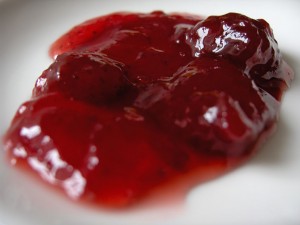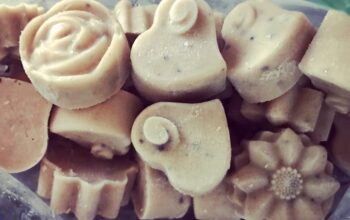 Making jellies and jams is a great way to preserve seasonal fruits and vegetables to enjoy year round! The first step is deciding which method to use. Jams use the entire fruit or vegetable, pulverized and cooked down. With jellies, just the juice is used – the fruit is cooked down and the poured through a “jelly bag” to create a clear product. (This process can be mimicked using a double layer of cheesecloth lining a colander.) Once the juice has been extracted it is processed in the same manner as the jam – sugar and other ingredients such as lemon juice and/or pectin is added depending on the recipe. The mixture is heated to a boil and jarred immediately for minimum spoilage. The distinctive consistency of both jams and jellies is created by the acids, pectin and sugars the fruit contains as well as heating. This interaction is incredibly important to the preservation and consistency of the product, and it is very important to follow each recipe without variation, until you get the hang of it. Recipes using honey are available, and raw sugar is advised.
Making jellies and jams is a great way to preserve seasonal fruits and vegetables to enjoy year round! The first step is deciding which method to use. Jams use the entire fruit or vegetable, pulverized and cooked down. With jellies, just the juice is used – the fruit is cooked down and the poured through a “jelly bag” to create a clear product. (This process can be mimicked using a double layer of cheesecloth lining a colander.) Once the juice has been extracted it is processed in the same manner as the jam – sugar and other ingredients such as lemon juice and/or pectin is added depending on the recipe. The mixture is heated to a boil and jarred immediately for minimum spoilage. The distinctive consistency of both jams and jellies is created by the acids, pectin and sugars the fruit contains as well as heating. This interaction is incredibly important to the preservation and consistency of the product, and it is very important to follow each recipe without variation, until you get the hang of it. Recipes using honey are available, and raw sugar is advised.
Many fruits contain enough acid and pectin to make jellies or jams by just adding sugar. Some may be lacking in acid, pectin, or both. These would require added lemon juice and/or pectin, depending on the deficiency. Sometimes combining two or more fruits with varying levels can bring you to an even ground. Combining strawberries and red currants is an example of using high pectin fruits with low, to cut back or eliminate the need for any added pectin. Recipe books such as “The Blue Chair Jam Cookbook” are full of tasty ideas! And if you get frustrated, you can always stop by the Farmers Market and visit Just Jammin’ for some local inspiration!



